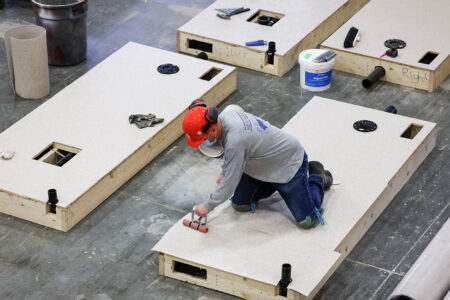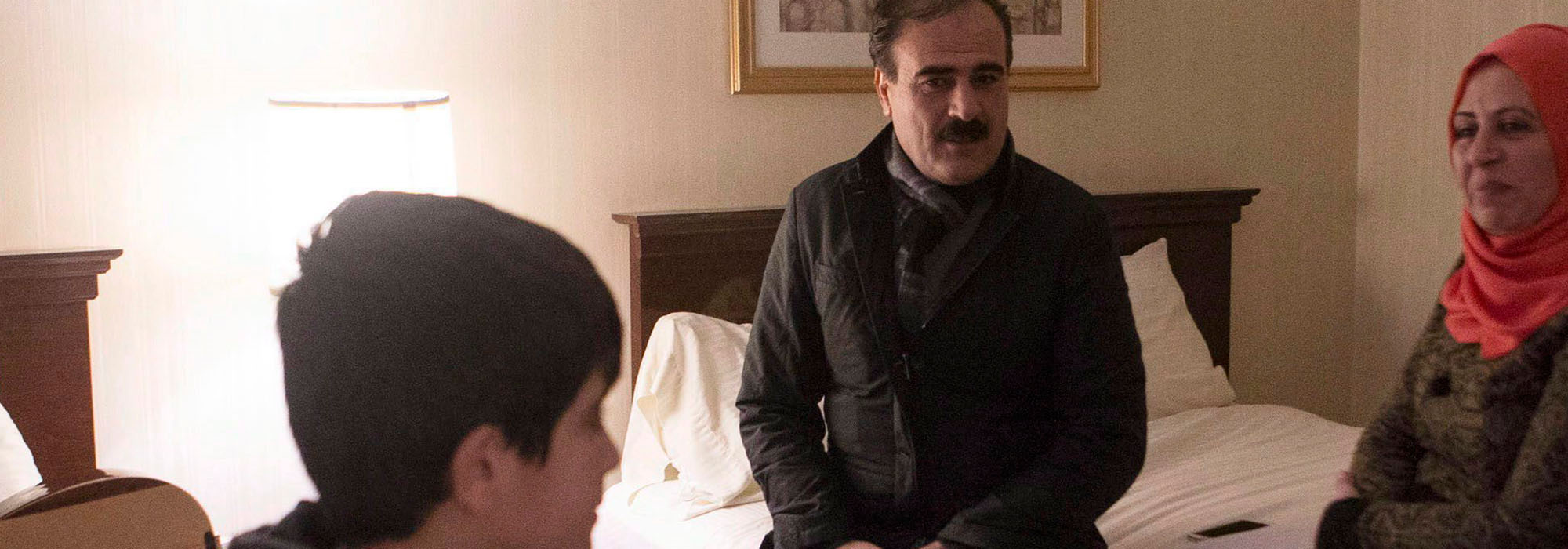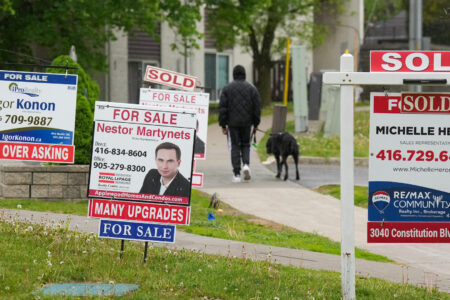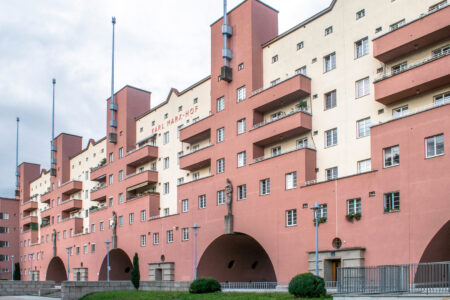
For newcomers to Canada, obtaining decent and affordable housing in a safe and welcoming neighbourhood is an anchor point for a new start. In addition to fulfilling the elemental need for shelter, it provides a base from which to seek out other key resources such as health-care providers, schools, language training and job counselling. It is also the scaffolding for rebuilding a sense of feeling settled, being “at home.”
Just over six months have elapsed since Justin Trudeau’s government initiated the massive “Welcome Syrians” refugee resettlement operation, and it has been less than three months since the 25,000th refugee arrived. Is it premature to take stock and assess lessons learned in regards to their housing experiences? Perhaps, but we can start to identity some key points and challenges by bringing together the wealth of evidence from previous research and the extensive Canada-wide media coverage of housing issues and initiatives for the Syrian newcomers.
In contrast to the majority of immigrants to Canada, refugee newcomers arrive from situations of profound and often traumatic dislocation, with very few material resources, and they rarely have close family members in Canada. Canadian immigration and settlement policy recognizes three categories of refugee. First, government-assisted refugees (GARs) are chosen from lists established by the UN Refugee Agency (UNHCR) that identify the most urgent cases of individuals and families needing resettlement in a safe country. Second is a parallel program, privately sponsored refugees (PSRs), whereby a limited number of refugees meeting the UNHCR criteria can be sponsored by religious or private nonprofit organizations or small groups of individuals, who might be related to the refugees being sponsored. Starting with the huge refugee wave of the Vietnamese “boat people” (1979-1981), Canada was one of very few countries to develop this program. These two programs are intended to provide financial support and other targeted assistance in the first year of settlement. The third category is the landed-in-Canada refugees, those who file a claim for recognition as a refugee after they arrive in Canada and whose application is successful. While none of the Syrian arrivals is in this category, we should not forget that study after study has highlighted the extreme precariousness and poor housing conditions of refugee claimants awaiting a decision.
The federal government pays for temporary accommodation for GARs. It also provides a one-time allowance to help them set up in their first independent housing unit, which refugee-serving organizations are expected to find for them. Most desire ordinary self-contained housing as soon as possible, but some need housing and specialized services under one roof because they have multiple and complex needs. These refugees might be assisted over several months to make a gradual transition to independent living. In the PSR program, sponsors must commit to material support and mentoring in all aspects of settlement for the first year, which includes the cost of suitable housing in either a sponsor’s home or a rental apartment.
A major longitudinal study of immigrants who came to Canada at the turn of the millennium or earlier shows that refugees’ labour market, income and housing situations all improved steadily over time. Still, they were disadvantaged compared with immigrants entering in the Family Class and Economic Class programs. For refugees, after four years, getting affordable housing remained a major challenge. The gap between refugees and those in the other admission categories widened when it came to crowded living conditions.
With the 2002 Immigration and Refugee Protection Act, Canada made a commitment to take in a greater share of “high needs” refugees — those who have endured protracted stays in refugee camps; those with large nuclear and multigenerational families, often headed by a female lone parent; those with major health or disability challenges; and those with low education and literacy levels. The Syrian resettlement operation continues this commitment. Research in Montreal , Toronto, and Vancouver has shown that it is harder for refugees with large families to obtain suitable housing. This is exactly the challenge that the settlement organizations assisting the Syrian government-assisted refugees have had to face in cities such as Vancouver, Ottawa, and Toronto. In those cities, shortages of affordable housing, especially for large families, leads to stays in hotels dragging out over weeks, even months, making it more difficult to reconstruct a sense of home and normalcy, especially for children.
Research in Montreal, Toronto, and Vancouver has shown that it is harder for refugees with large families to obtain suitable housing.
However, numerous small-scale short-term initiatives by private developers, local organizations and individual citizens have helped to alleviate this situation. The City of Montreal’s plan for welcoming Syrian refugees included a detailed protocol to pre-empt the risk of their landing in substandard apartments in dilapidated buildings. The risk of this occurring is quite high for low-income newcomers in Canada’s major cities, especially if they are refugees, according to the project Precarious Housing and Hidden Homelessness among Refugees, Asylum Seekers and Immigrants in Montreal, Toronto and Vancouver. A study by the United Way finds that in major cities, low-income newcomers are concentrated in the post-Second World War inner suburbs, where relatively affordable rental housing can be found, but where much of the stock is aging and deteriorating.
The urban geographies of the Syrian resettlement operation underscore the importance, but also the difficulties, of planning for the resources that refugees require in the locations where they settle. Since the income support payments to GARs over their first year are equivalent to provincial social assistance, it is often easier to find larger affordable apartments and houses in smaller urban centres. In some provinces, this was taken into consideration in the planning for the Syrian settlement. Quebec is an extreme example: following its pre-existing policy of “regionalization” of refugees, 75 percent of the Syrian GARs were directed away from Greater Montreal to Quebec City, Gatineau or one of eight smaller urban centres. Dispersal to smaller centres, however, can make it more difficult to ensure that there is a critical mass of specialized resources. As well, since public transportation is usually very limited in small cities, programs such as ride-sharing, taxi-buses, nonprofit self-service bicycle and car rentals, and coaching for driver education (especially for women) all need to be part of the settlement solution.
Of the Syrian refugees landed in Canada to date, 35 percent are privately sponsored, while a further 9 percent have entered under a new (since 2013) and increasingly popular program called the blended visa-office referred refugees program, in which the costs of supporting the refugee for the first year are shared equally between the federal government and private sponsors. According to administrative data from Citizenship and Immigration Canada, the incomes and employment outcomes of PSRs have been improving over the past decade, and Syrian PSRs have fewer settlement barriers compared with the GARs: they are better educated, with more urban-based job experience, and they have much smaller family sizes. Yet many may need specialized assistance for the traumas they have experienced.
The Syrian PSRs are highly localized in cities that have long-standing Syrian communities: almost half (46 percent) are in Greater Montreal (where they make up 95 percent of all Syrian refugee admissions), and a further 27 percent is in Greater Toronto. Yet refugee-serving organizations report receiving many requests from sponsors for help with settlement assistance. This signals the importance of making sure that adequate resources exist to support private sponsors’ orientation and mentoring activities, and to prevent sponsorships from breaking down — which may not happen often, but when it does, it can mean loss of housing. Private sponsorship contributes greatly to the image — at home and abroad — of a Canada that welcomes refugees. It will be important to keep track over the coming years of refugees’ housing and other settlement experiences, about which there is very limited research.
For the Canadian Observatory on Homelessness, a research institute, prolonged stays in temporary accommodation, as well as “permanent” housing that is overcrowded or in substandard condition, are all forms of housing exclusion on a spectrum of homelessness. The combination of planning, quick responses and local initiatives seems to have succeeded in preventing all forms of homelessness for the Syrian refugees. Moreover, the refugees included in the Welcome Syrians operation have been exempted from repaying the transportation loan, which increased the strain on their budgets and worsened their housing affordability problems.
In the medium term, more social housing would provide a sustainable housing solution for some of the high needs refugees who may not be able to achieve economic autonomy through the labour market. They, like many other families on social housing waiting lists, would greatly benefit from a change in federal government policy to reinvest, after a hiatus of more than 20 years, in the construction of low-rent social housing for families — including large and multi-generational families. Another policy measure, reinstating and increasing the federal funding for rehabilitation of the older, private rental housing stock — which has been drastically curtailed since 2010 — could greatly improve the living conditions of government-assisted and privately sponsored refugees.
Countless studies of the labour market trajectories of immigrant newcomers lead us to expect that many of the refugees will spend much of their first decade or so in Canada in precarious and low-paid work. While it is above all a matter of social justice, providing refugees with affordable and decent housing also may give them the necessary breathing room to take time for retraining, language skills development and other strategies so they can move faster out of the ranks of the working poor.
Photo: Canadian Press
This article is part of the Refugee Integration special feature.
Do you have something to say about the article you just read? Be part of the Policy Options discussion, and send in your own submission. Here is a link on how to do it. | Souhaitez-vous réagir à cet article ? Joignez-vous aux débats d’Options politiques et soumettez-nous votre texte en suivant ces directives.







